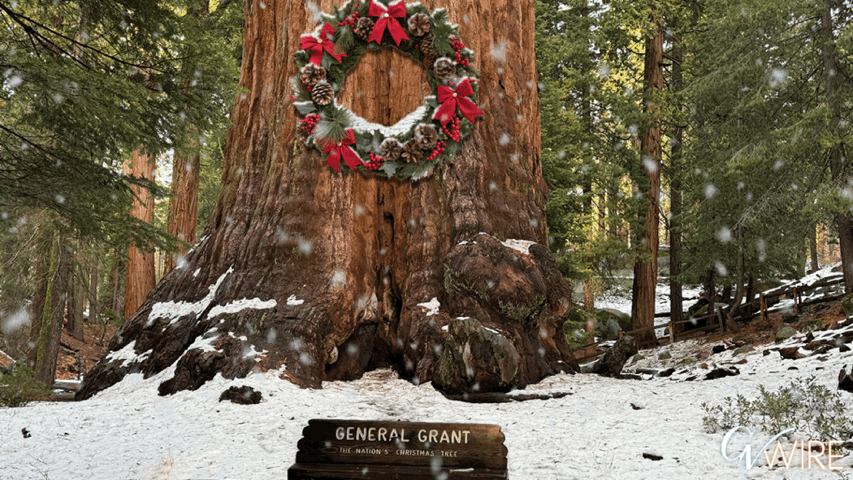Share
|
Getting your Trinity Audio player ready...
|
Farming advocates are praising a U.S. Supreme Court decision Thursday limiting what the Environmental Protection Agency can define as “protected waters.”
In 2008, the EPA ordered an Idaho couple to stop building a home on property the couple purchased near a lake despite having all the necessary permits, according to the American Farm Bureau. The agency claimed the lot, 300 feet from the lake, fell within their jurisdiction under the Clean Water Act.
The couple, Chantell and Michael Sackett, challenged the order and in October 2022, the case made it to the U.S. Supreme Court.
“Because of today’s victory, property owners like Mike and Chantell Sackett will no longer be threatened with thousands of dollars in Clean Water Act fines and blocked from building a home on their land,” said Steven D. Anderson, president and CEO of the Pacific Legal Foundation, in an email to GV Wire. “Instead, the EPA will only be able to regulate legitimate wetlands that have “a continuous surface connection to bodies that are ‘waters of the United States.’
“I cannot overstate how big a win this is. The decision … clears up 50 years of confusion and puts a check on the EPA’s decades-long mission creep by restoring the scope of the Clean Water Act to what Congress intended.”

Ruling Limits EPA Jurisdiction, Wins Duarte’s Praise
The five-to-four ruling in favor of the Sacketts limits what the agency can call protected waters.
“The Supreme Court’s ruling in Sackett v. EPA is a major victory for farmers and small businesses across the nation,” said Rep. John Duarte (R-Turlock) in a news release. “Today, the Court has sent a clear message that no government agency can trample on the rights of American citizens without providing them with a fair and just process.”
Duarte said the ruling extends to many disputes between property owners and governmental agencies when water is involved.
The opinion, written by Justice Samuel Alito, said agencies enforcing the Clean Water Act have not been consistent in interpreting the law, including “adjacent” lands under their jurisdiction.
The court ruling limits Clean Water Act to land “indistinguishable” from bodies of water.
In Thursday’s ruling, all nine justices agreed that the wetlands on the Sacketts’ property are not covered by the act.
But only five justices joined in the opinion that imposed a new test for evaluating when wetlands are covered by the Clean Water Act. Chief Justice John Roberts, Justice Clarence Thomas, and Alito would have adopted the narrower standard in 2006, in the last big wetlands case at the Supreme Court. They were joined Thursday by Justices Neil Gorsuch and Amy Coney Barrett.
On the dissenting side, Justice Brett Kavanaugh said the new definition departs from what agencies have used since the law passed. Justices Elaine Kagan, Sonia Sotomayor, and Ketanji Brown Jackson sided with Kavanaugh.
Environmentalists Decry Court’s Decision
Reacting to the decision, Manish Bapna, the chief executive of the Natural Resources Defense Council, called on Congress to amend the Clean Water Act to restore wetlands protections and on states to strengthen their own laws.
“The Supreme Court ripped the heart out of the law we depend on to protect American waters and wetlands. The majority chose to protect polluters at the expense of healthy wetlands and waterways. This decision will cause incalculable harm. Communities across the country will pay the price,” Bapna said in a statement.
Ruling Likely Restarts Biden Water Rules
In December 2022, the Biden administration finalized rules defining what was protected under the Clean Water Act.
The definitions from the EPA, supported by federal courts, undid rules outlined during President Donald Trump’s tenure. Under President Barack Obama, the Army Corps of Engineers, and the EPA had expanded the definition of protected waters.
Attorney Rafe Petersen, who represents miners, offshore wind developers, and other industries seeking EPA permits, said the Biden administration will likely have to “start all over again from scratch.”
Alito wrote that the high court has tried three different times to clarify what are “the waters of the United States.”
“When we last addressed the question 17 years ago, we were unable to agree on an opinion of the Court,” Alito wrote. “Today, we return to the problem and attempt to identify with greater clarity what the Act means by ‘the waters of the United States.’ ”
The case Alito cited, Rapanos v. United States, ruled in favor of a private developer on a five-to-four vote.
(The Associated Press contributed to this story.)



















